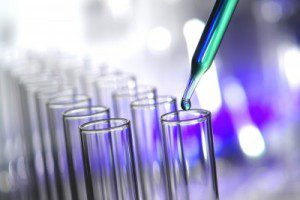
By Sayer Ji
Contributing writer for Wake Up World
Fluoride is promoted above good nutrition as a ‘therapeutic’ chemical necessary to prevent cavities, but it lowers IQ, calcifies the pineal gland and harms fertility, among a wide range of other adverse health effects.
There is no question remaining that fluoride lowers IQ, at least as far as high-quality epidemiological research published in peer-reviewed journals has shown.
Take the conclusion of this systematic review of the literature published in the journal Biological and Trace Elements Research in 2008, which looked at whether fluoride exposure has increased the risk of low intelligence quotient (IQ) in China over the past 20 years:
“[C]hildren who live in a fluorosis area [high fluoride exposure] have five times higher odds of developing low IQ than those who live in a nonfluorosis area or a slight fluorosis area.”
[pro_ad_display_adzone id=”110028″]
[See our IQ and Fluoride research page for seven first-hand study abstracts on this connection]
Arguably, those who do question this causal connection despite the research are already under fluoride’s powerful spell, since they don’t take sufficient care to reduce their exposure to this intellectually-disabling chemical. They’ve drank the fluoride-contaminated Kool-aid, and are unable to comprehend what is still obvious to those who have not.
But fluoride’s toxicity is not specific to only one type of tissue, i.e. neurological, but extends throughout the human body, having been linked to at least 30 distinct health problems stretching from calcification of soft tissue and endocrine glands (such as the pineal) to hypothyroidism, from hair loss to cancer. [see Fluoride Toxicity citations here]
While lawmakers, regulators and the industry using it consider the public gullible enough to believe that the IQ-lowering effects of fluoride a worthwhile price to pay for ‘healthy’ and ‘attractive’ teeth (even though fluoride exposure leads to fluorosis, an irreversible spotting, often yellowing of the enamel of the teeth), a more serious health problem lurks beneath the propaganda that has converted an industrial byproduct and pollutant into a “therapeutic” water, salt and milk additive. That problem is fluoride’s infertility and abortifacient properties.
Back in 1994, a study was published in the Journal of Toxicology and Environmental Health that found exposure to high fluoride concentrations in drinking water is associated with decreased birth rates. The researchers had reviewed the biomedical literature for fluoride toxicity and found decreased fertility in most animal species studied. This lead them to question whether fluoride would also affect human birth rates. They reported their method and results as follows:
A U.S. database of drinking water systems was used to identify index counties with water systems reporting fluoride levels of at least 3 ppm. These and adjacent counties were grouped in 30 regions spread over 9 states. For each county, two conceptionally different exposure measures were defined, and the annual total fertility rate (TFR) for women in the age range 10-49 yr was calculated for the period 1970-1988. For each region separately, the annual TFR was regressed on the fluoride measure and sociodemographic covariables. Most regions showed an association of decreasing TFR with increasing fluoride levels. Meta-analysis of the region-specific results confirmed that the combined result was a negative TFR/fluoride association with a consensus combined p value of .0002-.0004, depending on the analytical scenario. There is no evidence that this outcome resulted from selection bias, inaccurate data, or improper analytical methods. However, the study is one that used population means rather than data on individual women. Whether or not the fluoride effect on the fertility rate found at the county level also applies to individual women remains to be investigated.
Another study published in the American Journal of Industrial Medicine in 1995 found that among fabrication workers fluoride compound exposure was associated with an increased risk of spontaneous abortion:
Risk of spontaneous abortion (SAB) was examined in relation to chemical and physical agents in a retrospective study of employees of 14 seminconductor manufacturers: After screening over 6,000 employees, 506 current and 385 former workers were eligible. If a woman had multiple eligible pregnancies, one was selected at random. Telephone interviews provided data on demographics and occupational and other exposures during the first trimester. Two groups of chemicals accounted for the 45% excess risk of SAB among fabrication-room (fab) workers: photoresist and developed solvents (PDS), including glycol ethers, and fluoride compounds used in etching. Women exposed to high levels of both these agents were at greater risk (RR = 3.21, 95% confidence interval [CI] = 1.29-5.96). In fab workers without these exposures, SAB rates were not elevated (adjusted relative risk [RR] = 0.98, 95% CI = 0.55-1.69). An association was seen with workplace stress, which was not limited to women exposed to PDS or fluoride, nor did stress explain the associations between these chemicals and SAB.
Considering these findings, now let us zoom down to the animal level of research, which is unequivocal as far as fluoride’s anti-fertility/contraceptive/abortifacient properties.
Here are the male studies
- Jeannett A Izquierdo-Vega, Manuel Sà¡nchez-Gutiérrez, Luz Maràa Del Razo. Decreased in vitro fertility in male rats exposed to fluoride-induced oxidative stress damage and mitochondrial transmembrane potential loss. Toxicol Appl Pharmacol. 2008 Aug 1 ;230(3):352-7. Epub 2008 Mar 28. PMID: 18455746
- Zilong Sun, Ruiyan Niu, Bin Wang, Zhibin Jiao, Jinming Wang, Jianhai Zhang, Shaolin Wang, Jundong Wang. Fluoride-induced apoptosis and gene expression profiling in mice sperm in vivo. Arch Toxicol. 2011 Nov ;85(11):1441-52. Epub 2011 Feb 22. PMID: 21340527
- N J Chinoy, M V Rao, M V Narayana, E Neelakanta. Microdose vasal injection of sodium fluoride in the rat. Reprod Toxicol. 1991 ;5(6):505-12. PMID: 1839778
- R S Gupta, T I Khan, D Agrawal, J B S Kachhawa. The toxic effects of sodium fluoride on the reproductive system of male rats. Toxicol Ind Health. 2007 Oct;23(9):507-13. PMID:18681235
- P Sreedhar Reddy, T Pushpalatha, P Sreenivasula Reddy. Suppression of male reproduction in rats after exposure to sodium fluoride during early stages of development.Naturwissenschaften. 2007 Jul;94(7):607-11. Epub 2007 Feb 22. PMID: 17318612
Here are the female studies
- Yongjiang Zhou, Hailing Zhang, Junlin He, Xuemei Chen, Yubing Ding, Yingxiong Wang Xueqing Liu. Effects of sodium fluoride on reproductive function in female rats. Food Chem Toxicol. 2013 Feb 28. Epub 2013 Feb 28. PMID: 23459146
- H H Messer, W D Armstrong, L Singer. Fertility impairment in mice on a low fluoride intake. Science. 1972 Sep 8 ;177(4052):893-4. PMID: 5054644
From the perspective of Life, interference with a biological systems’ primary imperative (that is, the ability to reproduce via a healthy germline (ova/sperm)) is the ultimate sin. However, from the perspective of managing large numbers of human bodies – billions of them all dependent on limited resources – “side effects” such as contraception and infertility associated with the use of chemicals like fluoride could be considered beneficial collateral effects. Another convenient side effect is its mind-numbing and pineal gland calcifying effects, rendering exposed populations more docile and easily to manage and control. Interestingly, “antidepressant” drugs like Prozac contain fluoride, hence its chemical name fluoxetine. Those who have experienced this drug’s effects know it can disassociate you from reality, or simply anesthetize your emotions in relation to it.
The reality is that a massive, international industrial, medical and governmental system supports water and food fluoridation, and it will take many years of hard work, from the grassroots up, to reduce our continuous exposure to fluoride-based compounds. Until then, we have two clear paths to mitigate the damage: 1) Reduce our exposure. 2) Consume a diet rich in compounds that mitigate fluoride toxicity. There are a number of natural compounds that have been experimentally confirmed to reduce fluoride toxicity. Twenty-six of these are listed on our Fluoride Toxicity research page. This is not an exhaustive list, and tens of thousands of natural compounds, from spices to vitamins, nutrients to minerals, are likely to confer the same types of protections identified in those studies. The point is that simple dietary steps, especially incorporating into our diet organically-produced (better yet biodynamic) foods, can go a long way to protecting us from fluoride and thousands of other xenobiotic compounds we are exposed to on a regular basis.
Learn more about the story of how Fluoride, a poison, was converted into a “therapeutic” compound via propaganda, watch Fluoridegate: An American Tragedy on GreenMedTV.
Recent articles by Sayer Ji
- The Evidence-Based Healing Properties of 13 Common Fruits
- Dental Composites for Kids: Even Worse Than Mercury Amalgam?
- 13 Evidence-Based Medicinal Properties of Coconut Oil
- Five Amazing Healing Honey Facts
- Is This Fruit Extract 10,000 Times Better Than Chemotherapy?
Sayer Ji is the founder and director of GreenMedInfo.com and an advisory board member at the National Health Federation, an international nonprofit, consumer-education, health-freedom organization. He co-authored the book Cancer Killers: The Cause Is The Cure, and is working on another one with Tania Melkonian titled EATomology: An Edible Philosophy of Food.
[pro_ad_display_adzone id=”110027″]
Disclaimer: This article is not intended to provide medical advice, diagnosis or treatment. Views expressed here do not necessarily reflect those of Wake Up World or its staff.








